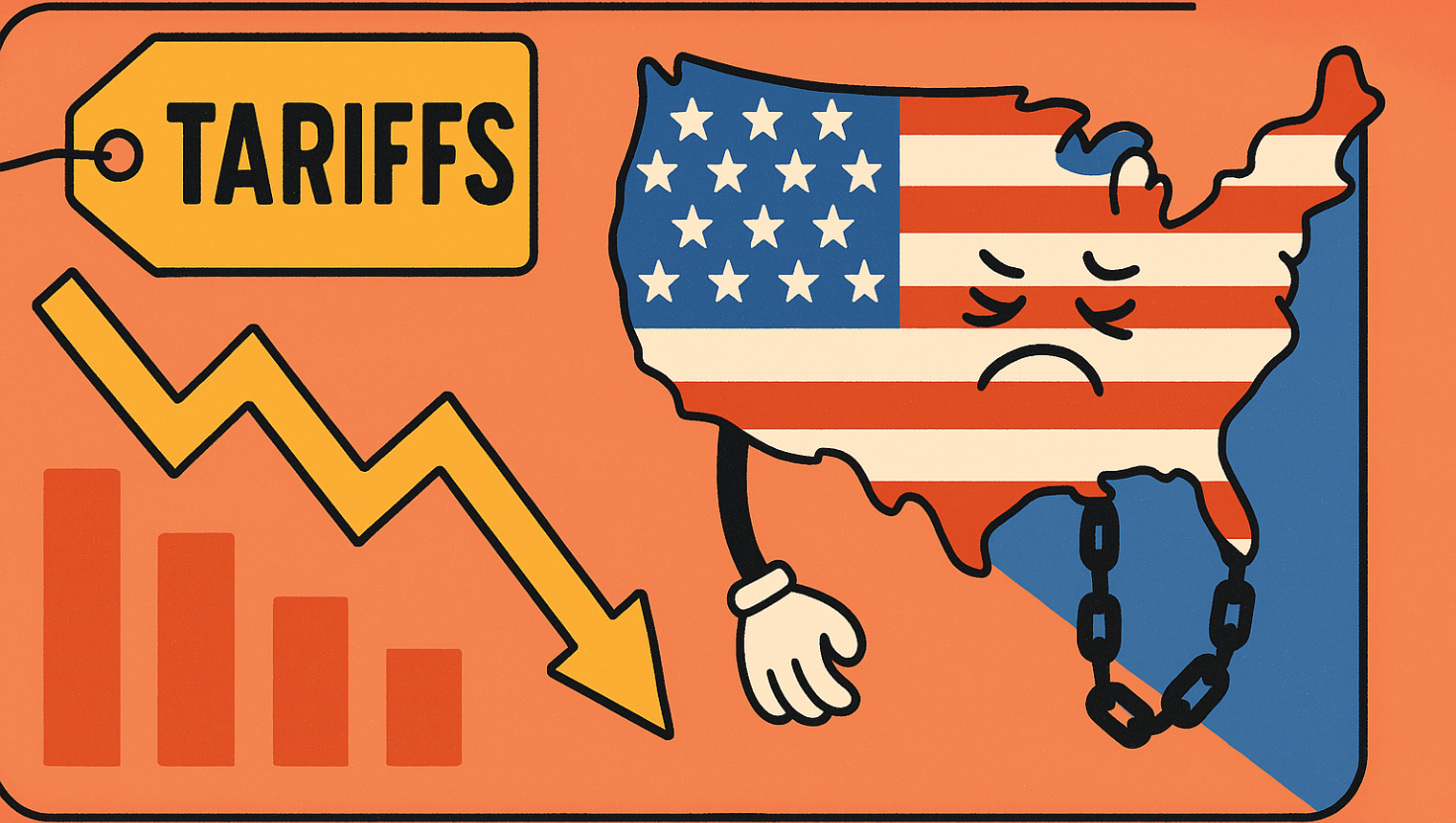Tariffs and the U.S. Economy: A Self-Inflicted Wound?
📢 Introduction
In a misguided attempt to "protect" American interests, recent U.S. tariff actions have instead done the reverse — isolating America economically and sparking a domestic firestorm of increased prices, supply chain disruption, and worldwide backlash.
💰 The Real Cost of Tariffs
🧾 Who Actually Pays Tariffs?
All of this despite the political rhetoric — tariffs aren't paid by foreign governments — they're borne by American importers, businesses, and consumers.
📊 98% of tariffs were shifted to U.S. consumers, a 2023 Tax Foundation study said.
Regular Americans are noticing increasing prices on electronics, clothing, auto parts, and even groceries. It's an invisible tax — but one that's paid in every shopping cart.
🌾 U.S. Farmers: Collateral Damage
🚜 From Trade Warriors to Trade Victims
Agriculture has become one of the hardest-hit sectors. Once China’s top supplier of soybeans and pork, the U.S. lost major buyers due to retaliatory tariffs.
📉 U.S. agricultural exports dropped 20% in 2024, says the USDA.
Rural communities, many of whom supported the tariff-heavy agenda, are now seeing falling incomes, farm closures, and shrinking markets.
🏭 Manufacturing: Promises vs. Reality
⚙️ Instead of a Boom, a Bust
The "Made in America" promise sounded good — but the outcome is far from perfect. Tariffs on raw materials such as steel and aluminum have raised the cost of production and hampered manufacturing.
📉 50% of U.S. manufacturers reported a decrease in new orders after tariff increase – National Association of Manufacturers.
Smaller plants can't absorb the costs, and big companies are postponing expansions or moving production overseas.
🌍 The Global Fallout
🤝 Allies Turned Adversaries
Over 50 nations have objected or asked the new U.S. tariffs to be revised under the World Trade Organization.
🇩🇪 🇯🇵 🇨🇦 Even Germany, Japan, and Canada, America's close allies, are retaliating.
While America plays hardball, other nations are solidifying their own bilateral trade agreements — with the U.S. on the outside looking in of international commerce circles.
📊 Interesting Economic Insights
📉 U.S. GDP growth has underperformed expectations every year tariffs were implemented since 2018.
🔁 Bottlenecks in supply chains have increased through re-routing and cost surges.
📦 E-commerce shipping costs are up 16% due to tariff-driven changes in logistics.
⚖️ So Who's Winning?
Not the American worker.
Not the U.S. consumer.
Not global faith in U.S. economic leadership.
China is discovering new markets.
Europe is inking new trade agreements.
And America is… scrambling.
🔚 Conclusion: Tariff Nation or Isolation Nation?
A strategy-less tariff doesn't build strength — it builds chaos, confusion, and economic stagnation. America demands wiser trade policy based on cooperation, innovation, and long-term competitiveness.
💥 Because in trade wars, there are no winners — only survivors.

